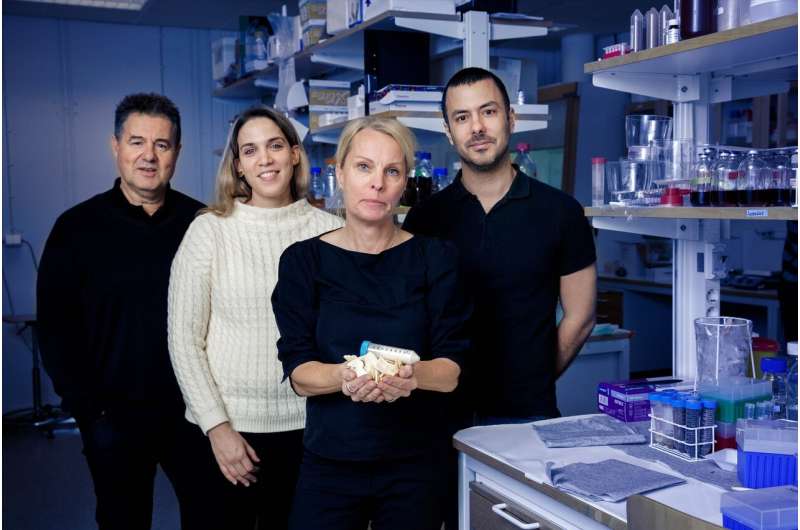Forest and sea residues strengthen the stomach

With the help of forest residues such as sawdust, branches and tops (GROT), and cellulose from sea squirts, researchers in Biochemical Process Engineering at Luleå University of Technology want to make our stomach to feel better. The researchers are the first to develop prebiotics from non-edible forest and sea resources, into a type of fiber that helps beneficial bacteria in the large intestine to thrive and multiply.
"We want to investigate whether we can obtain food products with prebiotic properties for animals and humans using cellulose from residues of forest and sea," Ulrika Rova says, professor of Biochemical Engineering at Luleå University of Technology and project manager.
Branches and tops become useful dietry fiber
It is through forest residues and by utilising the cellulosic outerlayer of sea squirt, the tunic, that the researchers, using mild chemical processes and enzymes, will produce useful dietary fiber and celloligosaccharides (COS) with prebiotic properties that promote health for the gastrointestinal flora. Prebiotics are fibers that pass untouched through the digestive system and begin to be digested first in the colon by intestinal bacteria.
"Sveaskog works broadly to develop new applications for our biomass. To be able to contribute to improved health in both people and animals with our GROT is good," says Ann-Britt Edfast, R&D manager at Sveaskog.
The researchers at Luleå University of Technology are the first to develop prebiotics from cellulose of forest and sea residues, a way to increase the value of resources from forest and sea. The forest residues, from Sveaskog, arrive as sawdust in bags to the lab, where it is ground to fine powder in a food mill. The researchers then isolate the cellulose using the team's custom-developed organosolv reactor. There they produce a cellulose that contains very little lignin, which is an advantage in the actual production of prebiotics (celloligosaccharides). The method is also used to produce cellulose free from proteins, lipids and ash substances from the sea squirt tunic that is provided by Marin Biogas.
For the benefit of animals and humans
The biggest challenge for the research team is then to add the right mixture of enzymes (commercial and in-house produced) to the cellulose so that one gets the desired prebiotic product consisting of 2-6 glucose units. The researchers' goal is for their marine and forest-produced prebiotics to establish a commercial production of prebiotics for the food and feed industry—for the benefit of animals and humans.
"Essum in Umeå, whose CEO Eva Grahn Håkansson, known for, among other things, having developed Verum hälsofil (processed sour milk) will then evaluate our prebiotic's health-promoting properties and whether it can be used for human consumption. The Swedish University of Agricultural Sciences (SLU) will test whether the prebiotic can be used to strengthen the immune system and the growth of farmed fish and thereby reduce the antibiotic consumption in fish farms," Ulrika Rova says.
The research project Food-grade Prebiotic Production—merging marine and forest resources for moving up the cellulose value-chain, led by Luleå University of Technology—is done in close collaboration with Essum AB and Marin Biogas AB, which cultivate sea squirt for the production of environmentally friendly fish feed, Sveaskog AB, Dyrka AB and LTU Business. The project is funded by Vinnova, the Swedish Energy Agency and Formas via the strategic innovation program BioInnovation.
More information: Anthi Karnaouri et al. Fine-Tuned Enzymatic Hydrolysis of Organosolv Pretreated Forest Materials for the Efficient Production of Cellobiose, Frontiers in Chemistry (2018). DOI: 10.3389/fchem.2018.00128
Provided by Lulea University of Technology




















